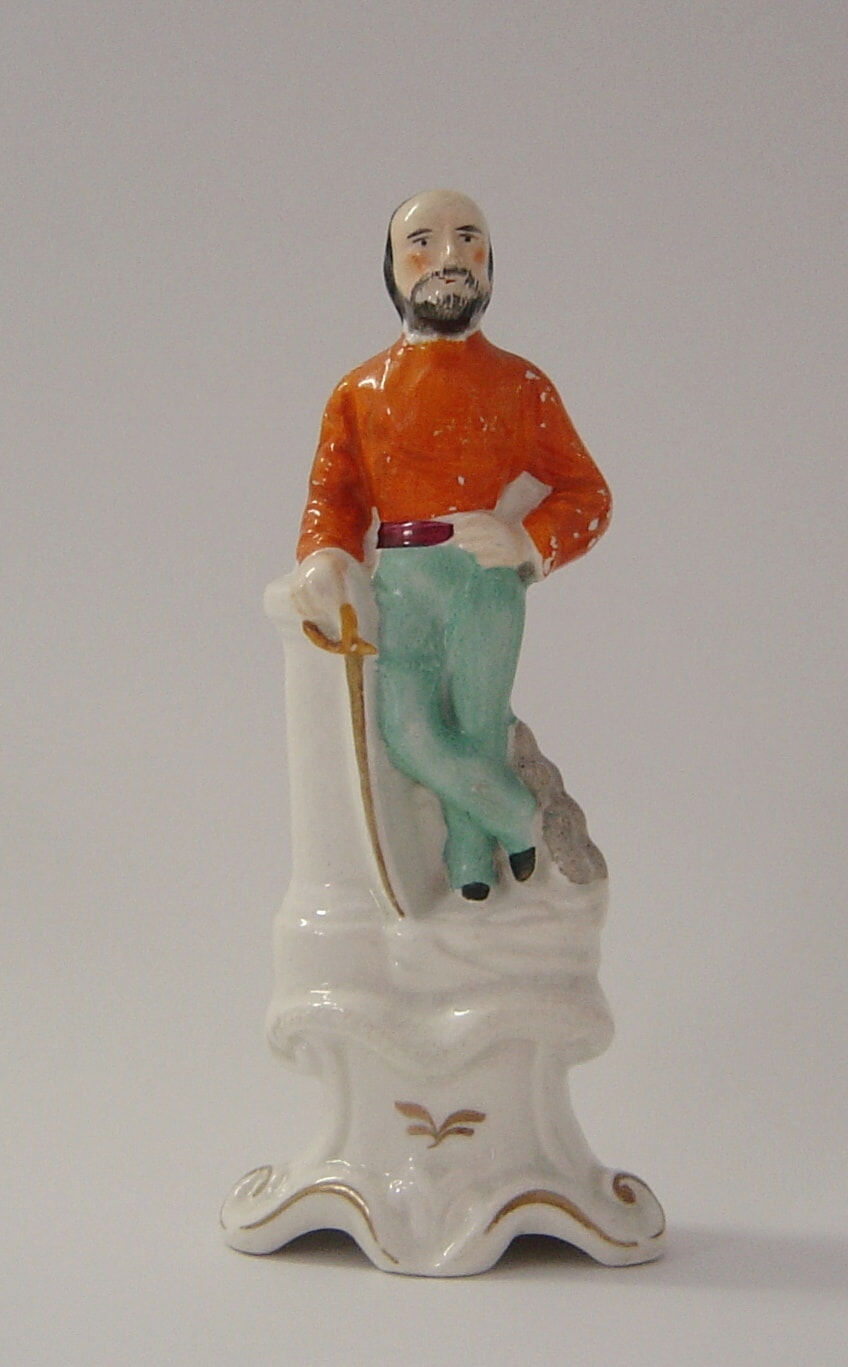STAFFORDSHIRE STORY: GARIBALDI

STAFFORDSHIRE STORY: GARIBALDI
By Marguerite Bell
From Napoleon to Hitler was the title of a history textbook I had in year 11 many years ago. it covered a very dramatic and exciting 150-year period of European history and included the rise of the nationalistic fervour which changed the map and resulted in the creation of many countries as we know them today.
Italy is an example of this and one of the key figures in its Unification was Guiseppe Garibaldi (1807-1882), patriot and soldier, who supported the ‘Risorgimento’, the movement to establish political unity which brought, in 1861, the many separately-governed states to single nationhood.
Garibaldi was involved with Italian politics for many years and exiled more than once as a result. In 1848 he joined the Roman Republic movement and in 1859 served Victor Emmanuel, the King of Sardinia, in the cause of Italian liberation. On 11 May 1860, Garibaldi led a group of a thousand ‘Red Shirts’ in a successful attack upon Sicily and Naples, which were then ruled by a member of the Spanish and French Bourbon families, rallying the populace and successfully handing these states to Victor Emmanuel, who became the first King of Italy in February 1861.
Garibaldi was revered as a national hero and when he visited England in 1864, was received enthusiastically. He and the Red Shirts were seen as the heroes of Italian independence. Popular heroes, political and military, were always suitable subjects for the Staffordshire figurine producers and there are at least fifteen figures of Garibaldi, which could be complex and expensive, as his image was well known at this time through engravings in the press. He was sometimes portrayed on horseback in a pair with Victor Emmanuel, with Colonel Peard, a British officer who fought alongside Garibaldi or with Shakespeare the tercentenary of whose birth was celebrated in 1864. Staffordshire makers included Sampson Smith, William Kent and Thomas Parr but attribution is sometimes ‘probable’ or ‘in the manner of’ or simply unknown as there were many reproductions and copies.
The figures in the Collection are not named as Garibaldi but both show a bare-headed, dark-haired, balding man with a trimmed beard and moustache, dressed in military uniform especially featuring the red shirt. One figure, (A0198-1989] is standing with his right hand on a sword hilt and his forearm on a round pedestal. His left hand is on his belt. References which show a similar figure, state that the upper part of the figure is identical to a photograph of Garibaldi in The British Museum and there are also a number of lithographs based on the photograph. This figure, circa 1855–75, is press-moulded earthenware with painted enamel on-glaze decoration and is on a rococo base with gilt line embellishment. The other, (A0255 -1989) and is shorter and similarly described but not in as good a condition. Stylistically, in the 1860s, there was a general tendency to paint figures a bit more sparsely. Paint was not necessarily applied all over the figure but in Garibaldi’s case however, the facial features vital to identifying him and the signature red shirt are clearly seen.
This article was first published in fairhall , Issue 14, March 2015, pp 18.
Journals
About US
Explore
Contact
VISIT
See our VISIT page for hours and directions
BY PHONE
+61 3 9416 2515
BY POST
PO Box 79, East Melbourne VIC 8002
ONLINE
General enquiries
Membership enquiries
Shop
Donation enquiries
Subscribe to E-Newsletter



